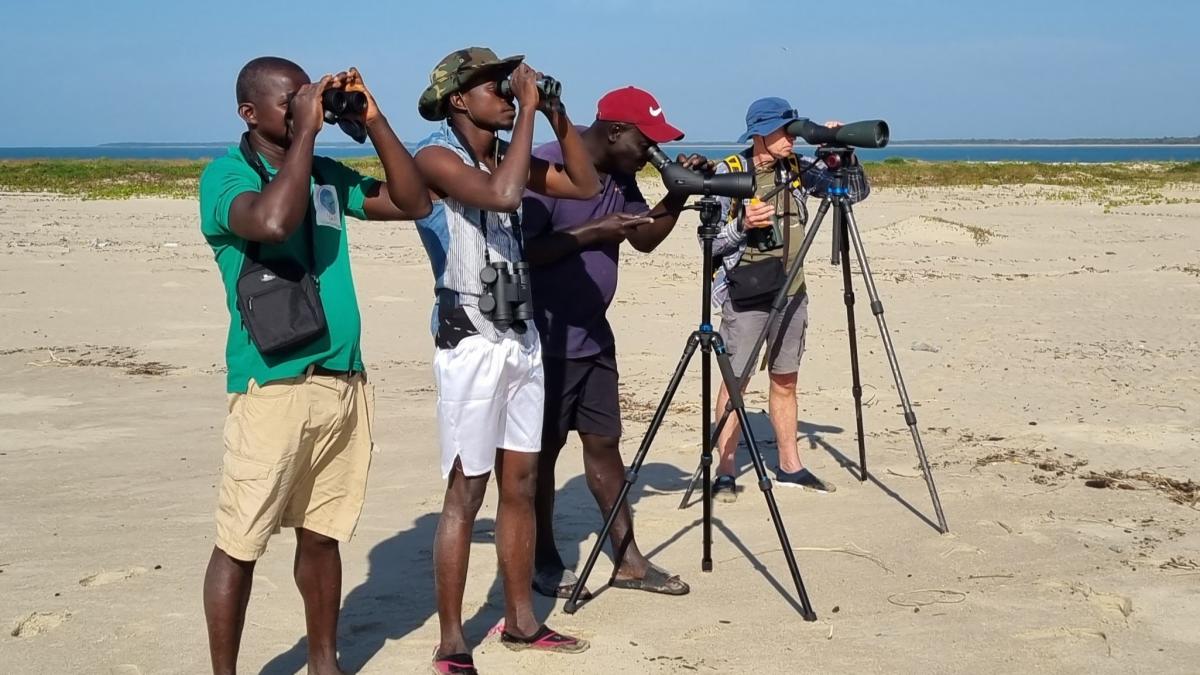Impressions from the total flyway count in 2023

Once every three years, migratory birds at all important wintering areas along the Atlantic coast, from Norway to South-Africa, are being counted. In January 2023, the fourth total count of the East Atlantic Flyway was organized by the WSFI. Organizations from 37 countries participated with one goal: to determine changes in numbers of waterbirds which spend considerable time of their lives in the Wadden Sea. An impression from three of the counted areas:
Wadden Sea, the Netherlands
A strong southwesterly wind of 7 Beaufort and pooring rain on Saturday 14 January left a trail of incomplete counts. Strong winds prevented boats from sailing to the uninhabited islands and tidal flats, areas that normally account for 10 to 15 percent of the numbers. The number of waterbirds in January in the Wadden Sea is usually between 1 and 1.2 million; 600,000 birds were reported from two third of the counting areas. A comparison of the counted areas with five previous years shows that White-fronted Goose, Greylag Goose and Barnacle Goose were clearly visible and present in (above) average numbers. Golden Plover, Lapwing, Dunlin and Red Knot also did well. However, Mallard and Oystercatcher continue their downward trend and Eurasian Curlew and Common Redshank were still at only 65 percent of previous years.
Baie d'Aiguillon, France
In France, about 553 areas are counted annually in January, of which just over 130 are along the coast. More than a thousand bird counters went out in these areas, coordinated by various organizations, including the LPO. Average numbers of Common Teals, Mallards, Dunlins and Lapwings were counted along the Atlantic coast. The number of Red Knots was low, especially in two important bays for this species, Aiguillon and Moëze-Oléron, although not all data were available at the time of writing.
Red Knots are numerous sandpipers along the migratory route, but show strikingly different developments. The islandica subspecies, which breeds in Greenland and Northeastern Canada, winters along the European coast. According to the flyway counts, this population is growing. But the subspecies canutus from Siberia is struggling with a sharp decrease. These birds overwinter along the West-African coast.
Bijagós, Guinea-Bissau
After the Banc d’Arguin in Mauritania, Guinea-Bissau is the most important wintering area in West-Africa. The entire coastline of the mainland and the Bijagós archipelago is actually one large system of estuaries, shallow seas, mangroves and mudflats. Here waterfowl cannot be counted during high tide, because they then stay hidden in the mangrove forests. That is why sample counts are done here at low tide. In January, six teams of people from Guinea-Bissau, supported by five birdwatchers from Europe (each in a team), counted the entire coastal area and the Bijagos Islands. Because of the random sampling method it is difficult to give preliminary results, but the Curlew Sandpiper, Bar-tailed Godwit and Whimbrel were the most frequently counted waders. They were followed by Common Ringed Plover, Sanderling and Common Redshank. It was also nice to see quite a few healthy wintering Sandwich Terns, a species that was hit hard by Avian Influenza last breeding season.
